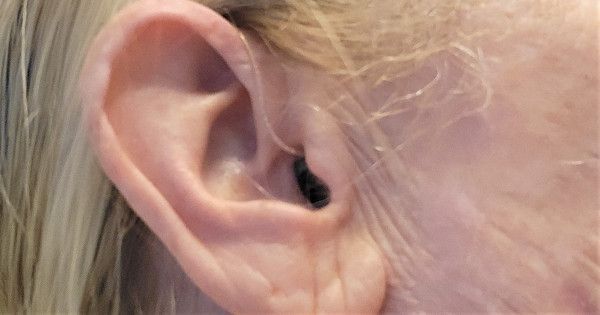Otosclerosis, also known as otospongiosis, is a condition affecting the bones of the ear, leading to hearing difficulties. This comprehensive guide aims to shed light on otospongiosis, offering essential information for those diagnosed and their families.
Comprehensive Overview of Otospongiosis
Otosclerosis, or otospongiosis, is a progressive condition that primarily impacts the stapes bone in the middle ear. This abnormal bone growth hinders sound transmission, leading to hearing loss. The exact cause is unknown, but it’s believed to involve genetic and environmental factors. Approximately half a million people in the U.S. are affected, with symptoms usually starting in adulthood.
The primary symptom is progressive hearing loss, particularly in low-frequency sounds. Otospongiosis can also lead to tinnitus and, in rare cases, vertigo. While there’s no cure, treatments like hearing aids and stapedectomy surgery are effective in managing symptoms.
Otospongiosis An In-depth Overview
In our pursuit of understanding Otospongiosis, it is essential to start with a detailed overview. Otosclerosis is a progressive hearing condition that predominantly affects the stapes, one of the tiny bones in the middle ear. Over time, an abnormal bone growth develops around the stapes, causing it to become less flexible and impeding the transmission of sound to the inner ear.
The exact cause of Otospongiosis remains a mystery. However, a combination of genetic and environmental factors is believed to contribute to its occurrence. It is estimated that roughly half a million people in the United States are affected by otosclerosis, with the condition often beginning in early to middle adulthood.
In terms of symptoms, the initial and most common one is progressive hearing loss. This typically starts as difficulty hearing low-frequency sounds or whispers. Additionally, otosclerosis can cause tinnitus, a sensation of ringing or buzzing in the ear, and in rare cases, it can also cause vertigo, a sensation of being unsteady or spinning.
While Otospongiosis is currently incurable, several treatments exist to manage the symptoms effectively. These range from hearing aids, which amplify sound, to surgery such as stapedectomy, where the affected bone is removed and replaced with a prosthetic.
Anatomy and Physiology
Understanding otospongiosis requires knowledge of the ear’s structure and how the condition alters its function. The ear consists of three parts: the outer, middle, and inner ear. Sound waves travel through these areas, with the middle ear’s ossicles amplifying them. In otosclerosis, the abnormal bone growth around the stapes restricts its movement, affecting sound transmission and causing hearing loss. If the condition progresses to the cochlea, it can result in sensorineural hearing loss.
Latest Research and Developments
Recent studies have brought new insights into otospongiosis. A study in Nature Communications has identified genetic markers linked to the condition [Reference 1]. Additionally, a PMC – NCBI review discusses the effectiveness of modern treatments like etidronate in managing otosclerosis-related hearing loss [Reference 2].
Risk Factors and Genetics
Otospongiosis has a significant genetic component, with a family history increasing the risk of development. The condition is more common in women and often worsens during pregnancy. Ethnicity also influences its prevalence, being more common in Caucasians.
Genetics Behind Otospongiosis
The hereditary nature of otospongiosis is a key focus of research. It’s believed to result from multiple gene variants, with no single gene identified as the sole cause. For example, variants in the TGBF1 gene, which regulates bone and cartilage growth, may increase otosclerosis risk. This complex genetic interplay requires further research for complete understanding.
Otospongiosis and Tinnitus
Many with otosclerosis/otospongiosis experience tinnitus, a symptom exacerbated in quiet environments. This can significantly affect life quality, leading to sleep and concentration issues. While incurable, various strategies help manage tinnitus symptoms.
FAQ Section
What is Otospongiosis? Otosclerosis, or otospongiosis, is a condition causing abnormal bone growth in the ear, leading to hearing loss.
How is Otospongiosis Diagnosed? Diagnosis involves hearing tests and medical evaluations.
Can Otospongiosis Be Treated? Yes, with hearing aids or surgery like stapedectomy.
Is Otospongiosis Hereditary? Yes, genetics play a significant role in its development.
Do Hearing Aids Help with Otospongiosis? Modern hearing aids are effective in managing its symptoms.
Can Lifestyle Changes Help with Otospongiosis? Yes, lifestyle adjustments and assistive devices can improve quality of life.
Practical Tips for Managing Otospongiosis
- Explore Advanced Hearing Aids: Seek devices with improved sound quality.
- Maintain Social Engagement: Engage in activities to maintain a positive mindset.
- Join Support Groups: Connect with others facing similar challenges.
- Communicate Your Needs: Help others understand your condition.
- Regular Medical Check-ups: Monitor your condition with consistent medical visits.
Genome-wide screen of otosclerosis in population biobanks: 27 loci and shared associations with skeletal structure – Published in Nature Communications, this study explores the pathophysiology of otosclerosis. It identifies 27 association loci and examines the shared associations with skeletal structure, providing new insights into the genetic factors of otosclerosis. Read the study here.
Conservative Otosclerosis Treatment With Sodium Fluoride and Other Modern Formulations: A Systematic Review – This systematic review, available on PMC – NCBI, discusses the effectiveness of treatments like etidronate for hearing stabilization in patients with otosclerosis. It provides a comprehensive analysis of current treatment options and their efficacy. Access the review here.
These references offer valuable information on the genetic understanding and treatment advancements of otosclerosis, which can be incorporated into the article for a more comprehensive and up-to-date perspective.






